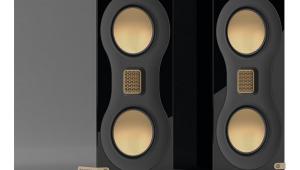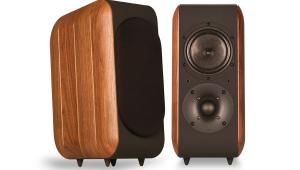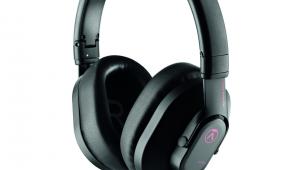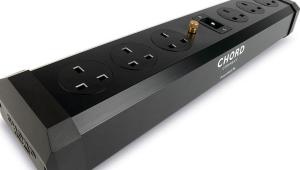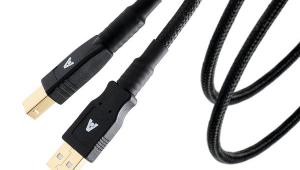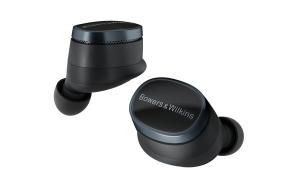Chord Electronics Mojo
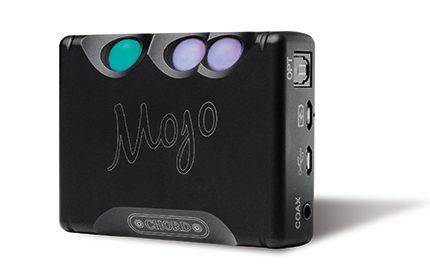
 As two-channel audio might be seen to be a fairly mature category, moments of genuine innovation are pretty few and far between. That said, Chord Electronics’ Hugo (HFC 386) has a reasonable claim to being of some significance. The combined preamp/DAC in a portable form factor impressed us and has been a significant sales success too.
As two-channel audio might be seen to be a fairly mature category, moments of genuine innovation are pretty few and far between. That said, Chord Electronics’ Hugo (HFC 386) has a reasonable claim to being of some significance. The combined preamp/DAC in a portable form factor impressed us and has been a significant sales success too.
At the same time, Chord hasn’t been blind to some of the limitations of the Hugo as a portable device. While fairly small, it is hardly pocket friendly and the £1,400 asking price is a little on the high side for portable users. Even before the Hugo was launched, it appears that Chord was harbouring desires to make a smaller version, but limitations in the technology available hampered its efforts. Now, though, it has released the Mojo (an abbreviation of ‘Mobile Joy’ should you be wondering), which aims to do much of what Hugo does only smaller and cheaper.
To this end, the Mojo is still built around an FPGA chip running Chord’s bespoke decoding, filtering and preamp functions. The Mojo can decode material from 32kHz to a faintly unnecessary 768kHz and all flavours of DSD up to 512 (a rate at which almost nothing is commercially available). It also sports coaxial and optical inputs and a pair of 3.5mm outputs. By use of a new FPGA and board design that lays the battery across the top of it, the Mojo is a much more pocket-friendly option while still claiming a 10-hour battery life from a four-hour charge. Unlike the rival Oppo HA-2 (HFC 397), however, the Chord can’t be used as a mobile charger for your phone.
This spec is then paired to some revisions that are intended to make the Mojo a more forgiving partner for use with sensitive headphones and in-ear monitors. Efforts have been made to drop the noise levels still lower and ensure that the presentation is better tuned to their performance. As the Mojo can still produce the same half an amp of current that the Hugo can, it should still be able to handle more demanding loads as well.
As you might expect, the £1,000 reduction in price from Hugo to Mojo has meant that some features have had to be shed. The Mojo has no adjustable digital filters, RCA output or Bluetooth connection. A sneak reveal by Chord boss John Franks at the launch, though, suggests that the latter omission might have an add-on based solution in the future. This is hardly unexpected, though, and given that Chord is claiming that the Mojo offers Hugo’s performance at less than one third of the price, the fact it has any features at all might be taken as a source of wonderment.
Externally, the Chord is relatively conventional looking – at least by the standards of the brand. A metal box roughly the size of a cigarette pack, it breaks with at least one Chord tradition from the off in that it names the inputs and outputs. Control comes via a trio of plastic balls embedded in the edge that operate the power and volume. Like the Hugo, volume and sampling rate is indicated by the colour of these balls, which change depending on the volume selected and the type of incoming signal. Once you have learnt your colour shift, it all works really rather well, but the balls themselves are fingerprint magnets and feel a little odd.
The Mojo is able to select inputs automatically, which works well in practise and you can select a line-level output by holding down both volume buttons at the same time. The only slight peculiarity in terms of the connections is that there is a separate USB input for charging – presumably relating to the FPGA. For the moment, the Mojo is only available in black, but it looks smart enough and the fit and finish is excellent. Chord has managed to retain a little of the house style at this relatively affordable price and also make the Mojo perfectly understandable to newcomers.
The Mojo requires a driver for Windows (but otherwise works perfectly well without one), which is located on the Chord website. This installs quickly and painlessly and having done so, allows the DAC to talk to jRiver on a USB 2 connection with no fuss. While Chord’s claims that the Mojo is the performance equal of the Hugo and at £400 stands comparison to a digital product that costs an enormous amount more might seem bold, they are certainly not without foundation.
Sound quality
From the outset, the Mojo has a number of similarities with its big brother. It leaves very little trace of itself on the recording. The presentation of Jack White’s Lazaretto is free of any traits that can easily
be assigned to the Mojo and instead lets Three Women sound composed, detailed and as entertaining as it should. White’s vocals are laden with detail and their relationship to supporting instruments is entirely logical. The snap and drive to the percussion is also extremely appealing. Chord has long made the argument that it is timing errors in digital that affect our perception and enjoyment of music and listening to the immediacy of the Mojo, it may well have a point.
Switching to the 24-bit/96kHz remaster of Pink Floyd’s The Division Bell, the Mojo retains the same compelling sense of neutrality, but the boost in performance is immediate and extremely impressive. Keep Talking is vast and almost liquid smooth while the layers of vocals and instruments are arranged perfectly. There is sufficient headroom to ensure that it can take most headphones louder than you would reasonably want to listen at. The only real limit to performance
is the aforementioned headphones or earphones and with something talented like Oppo’s PM-3 (HFC 399) or the Noble 6 earphone, the Mojo delivers a truly exceptional sound.
The way it works with the Noble is indicative that the tweaks made to it for IEM operation have been effective. While many rivals use a high and low-gain setting to reduce noise, the Mojo has a single volume ramp and it manages to be completely free of noise at low levels and able to let earphones show what they can really do. This means that bright and unrefined models tend to sound just that, but if you are going to spend out on it, it is unlikely you’d pair it with underperforming cans.
Using the Mojo as a line-level DAC doesn’t fundamentally alter the presentation, but it does at least give the Hugo a breathing space as the line-level setting appears to be a touch on the high side and it doesn’t appear to have quite the same sense of scale when the two are compared side by side. Whether this is as simple as the Mojo relying on a 3.5mm socket instead of a pair of RCA phono connections is hard to say, but as a device to work in both home systems and more portable ones, the larger (and more expensive let’s not forget) Hugo certainly has the edge.
Conclusion
This should not distract from the truly sparkling performance that the Mojo offers, though. Chord has managed to distil many of the qualities of the Hugo into a device that costs less than a third as much and if you are a high-end earphone user, the Mojo is arguably a better choice. This is a remarkably neutral piece of digital decoding at a price that is firmly at the affordable end of the market and it is something that should have us all genuinely excited.
DETAILS
PRODUCT: Chord Electronics Mojo
ORIGIN: UK
TYPE: Headphone amplifier/DAC
WEIGHT: 174g
DIMENSIONS (WxHxD): 82 x 60 x 22mm
FEATURES
● Supports: PCM to 32-bit/768kHz & DSD to 512
● Optical, coaxial & Micro USB digital inputs
● Twin 3.5mm headphone outputs
● Custom decoding built around an FPGA chip
DISTRIBUTOR: Chord Electronics
TELEPHONE: 01622 721444
WEBSITE: chordelectronics.co.uk
 Click here to purchase a copy and read the full review
Click here to purchase a copy and read the full review
 |
Inside this month's issue:
Ruark R610 music system and Sabre-R standmount speakers, PMC twenty.23i Active, floorstanders, English Acoustics Downton preamplifier, Bluesound NODE ICON preamp/streamer, Ortofon Concorde Music Blue MM cartridge and much, much more
|



























